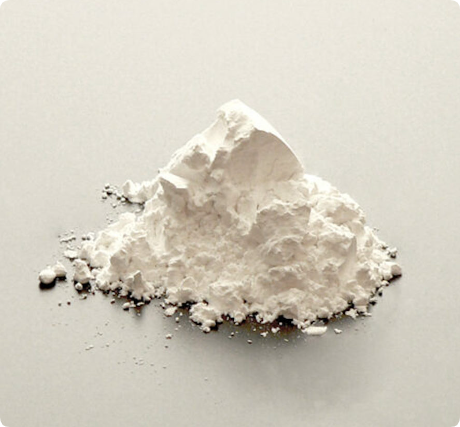Selecting the right tableware material is crucial in the global retail and custom markets, especially when deciding between bone china and ceramic. As a globally recognized ODM/OEM ceramics manufacturer, EKA Ceramic is dedicated to providing high-quality bone china and ceramic products to B2B buyers. This article offers a detailed analysis of the strength differences between bone china and ceramic, helping you make the best choice for your market needs.
What is Bone China? What is Ceramic?
Before diving into the strength differences, it’s essential to understand the basics of bone china and ceramic.
Bone China
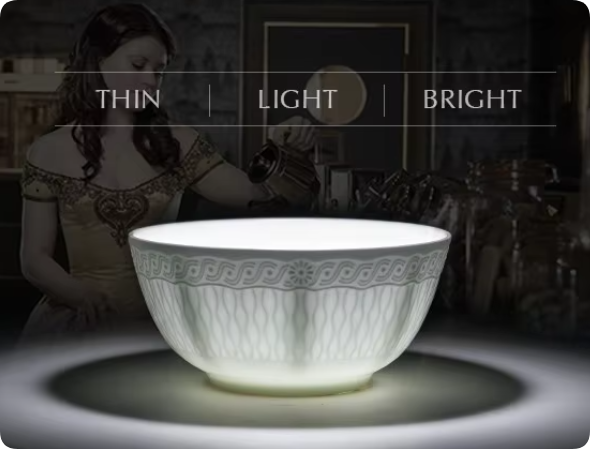
Bone china is a type of ceramic that contains bone ash, typically around 25-45%. The production process is relatively complex, requiring two rounds of high-temperature firing. Bone china is known for its lightweight feel, translucency, smooth texture, and high strength, making it highly popular in the premium tableware market.
Ceramic
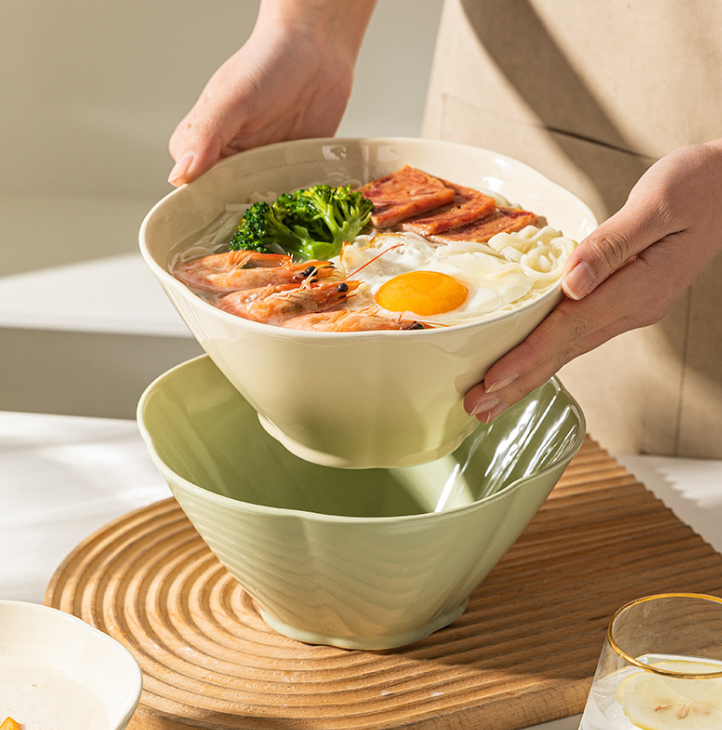
Ceramic generally refers to materials made from clay and other natural minerals, often fired one or more times. It includes various types, such as stoneware, earthenware, and porcelain. The hardness and durability of ceramic vary depending on its composition and firing process.
Comparing the Strength of Bone China and Ceramic
In comparing bone china and ceramic, strength is a key consideration. Below, we compare the strength of these materials across three main aspects.
1. Materials and Composition
Bone china is primarily made from bone ash and refined ceramic materials, which give it greater flexibility. In contrast, ceramic is primarily composed of clay and other minerals, resulting in a heavier feel with relatively lower flexibility.
2. Hardness
Ceramic has a high hardness level due to its high firing temperature, making it resistant to scratches and suitable for various settings. Bone china is slightly less hard but is more flexible, reducing its likelihood of breaking and making it a strong choice for high-end and commercial tableware markets.
3. Durability
In terms of everyday durability, bone china outperforms in resistance to heat, acid, alkali, and corrosion. Although ceramic has a higher hardness, it is less impact-resistant. For commercial scenarios involving frequent handling and washing, bone china’s crack and damage resistance give it an edge.
| Property | Bone China | Ceramic |
|---|---|---|
| Main Composition | Bone ash + refined ceramics | Clay + minerals |
| Hardness | Moderate, good crack resistance | High, scratch-resistant |
| Flexibility | High, less likely to shatter | Lower, more fragile |
| Durability | Impact, acid, and alkali resistant | Lower impact resistance |
| Suitable Scenarios | High-end, commercial settings | Everyday tableware and decor |
Analysis of Suitable Scenarios for Bone China and Ceramic
For B2B buyers, different materials are suitable for different market needs. Below, we analyze the scenarios in which bone china and ceramic work best, helping you make more targeted procurement decisions based on your customers’ needs.
Scenarios for Bone China
- High-End Tableware Market: Bone china’s refined appearance and translucency make it ideal for high-end tableware collections in retail.
- Hotel and Catering Industries: Due to its high flexibility and durability, bone china is highly suitable for use in commercial settings, such as hotels and restaurants.
- Customized Gifts: EKA Ceramic’s OEM customization services can turn bone china products into personalized gifts, meeting the high standards of the luxury gift market.
Scenarios for Ceramic
- Everyday Household Use: With its hardness and durability, ceramic is ideal for everyday household use.
- Cost-Effective Retail Products: Ceramic is more affordable, making it popular in budget-conscious retail markets.
- Decorative and Craft Items: Ceramic can be crafted into various decorative pieces, making it an ideal option for household decor and crafts sections in retail.
Advantages of Bone China and Ceramic for Customization
As a leading ODM/OEM ceramics manufacturer, EKA Ceramic offers flexible customization services to meet the personalized needs of retail and B2B customers. Bone china and ceramic each have distinct advantages in customization.
Customization Advantages of Bone China
- Premium Branding: The material and aesthetic appeal of bone china are suitable for high-end branding, such as printing brand logos to enhance value.
- Diverse Design Options: Bone china’s flexibility allows for more complex shapes, catering to high-end markets’ need for unique designs.
Customization Advantages of Ceramic
- Cost-Effectiveness: Ceramic’s lower material cost makes it suitable for mass production, meeting the cost control needs of most retailers.
- Versatile Craft Choices: Ceramic can undergo various surface treatments, such as overglaze decoration and engraving, making it ideal for personalized design and decor.
How to Choose the Right Material?
For B2B buyers with different needs, the key to choosing bone china or ceramic lies in understanding market positioning and consumer demands.
- High-End Markets: Bone china is recommended for its lightweight, translucency, and high strength, catering to premium markets.
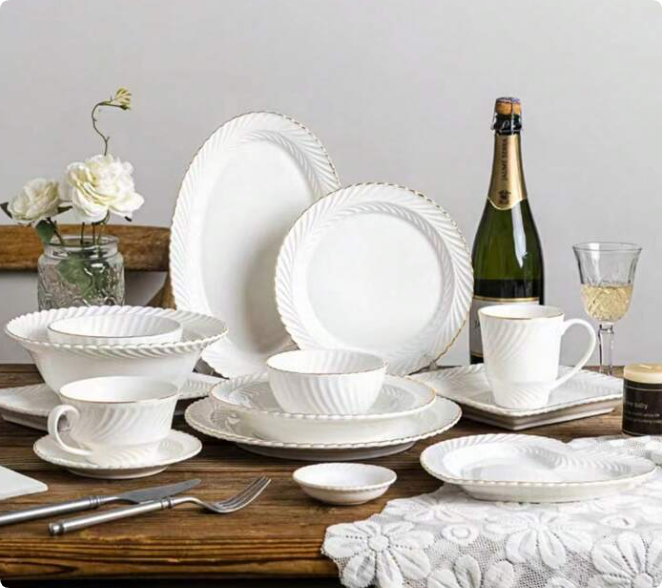
Bone china dinnerware
- Mass Market: Ceramic is suggested for its variety and affordability, suitable for budget-conscious markets.
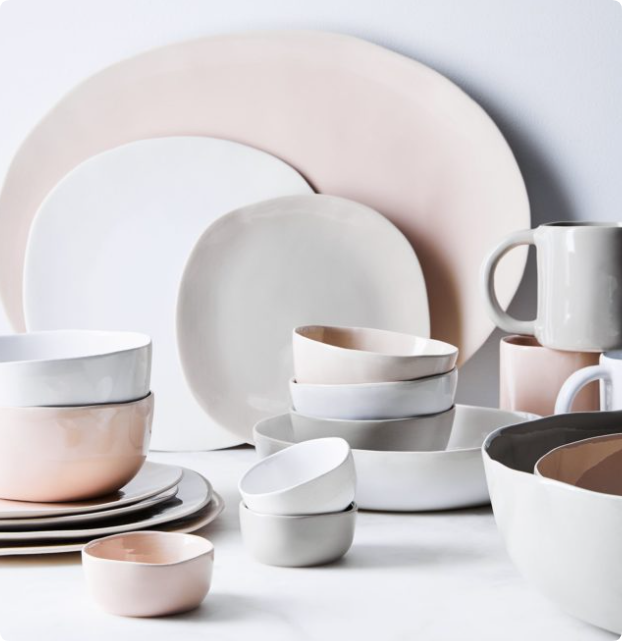
Ceramic dinnerware
Purchasing Advice from EKA Ceramic
As a trusted supplier in the ceramics industry, EKA Ceramic offers professional procurement advice to help B2B buyers obtain the best products for their needs.
- Understand Market Demand: Bone china is ideal for premium and design-focused markets, while ceramic is best for general-purpose and durability-focused markets.
- Procurement Volume Planning: Bone china is suitable for small-batch custom orders for high-end clients, while ceramic is ideal for large-scale retail purchases.
- Product Customization Services: EKA Ceramic’s OEM/ODM services help clients realize personalized designs and branding, enhancing market competitiveness.
Conclusion
Both bone china and ceramic play important roles in different markets. By thoroughly comparing their strength, durability, suitable scenarios, and customization advantages, B2B buyers can make more informed purchasing decisions based on their market needs. EKA Ceramic is committed to providing professional ceramics customization services to B2B customers worldwide. We welcome you to contact us for further purchasing advice and support.

